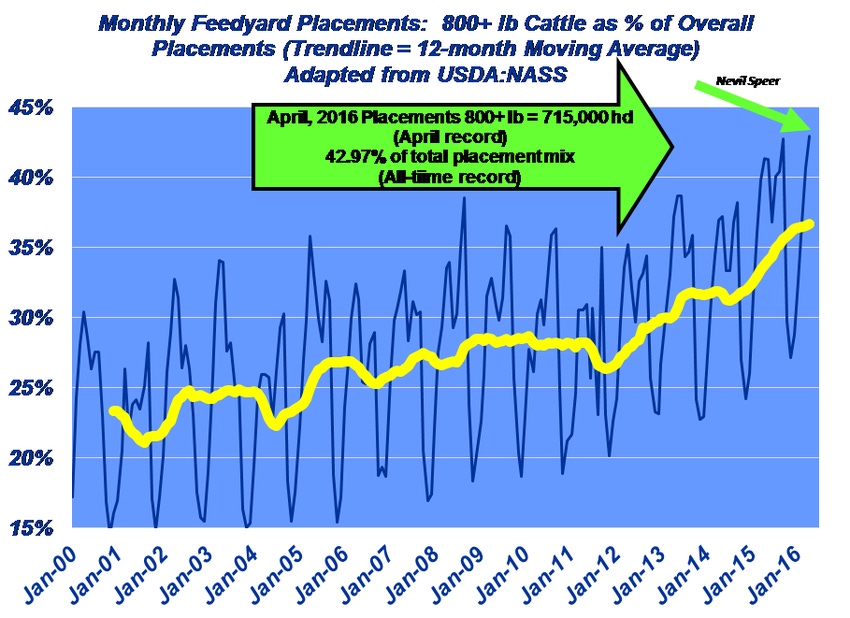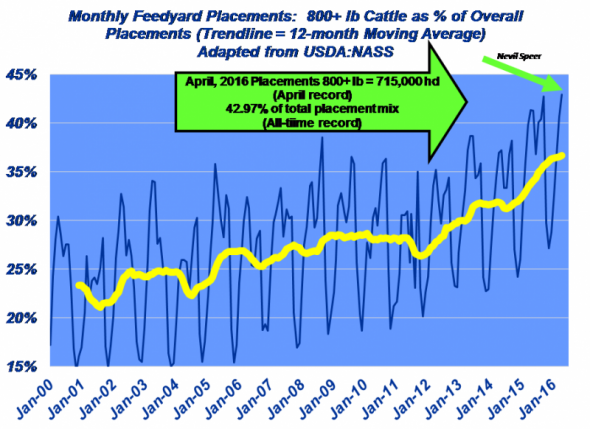Feedyards continue to place heavyweight feeders and shun lightweight calves. What are the implications?
May 24, 2016

This column has previously highlighted shifting feedyard placement trends over time. That was especially true in 2015 as market pressure made both buyers and sellers reluctant participants. Market reluctance resulted in slower marketings, and subsequently slower placements on the other side, too.
Interestingly enough, the placement decline was comprised entirely of the three lightest categories—less than 600 pounds, 600-699 pounds and 700-799 pounds respectively. However, placements of heavy feeders, those weighing more than 800 pounds, were actually up in 2015.
Fast forward to USDA’s May Cattle on Feed report. Placements at 1.664 million head were well ahead of pre-report estimates – coming in at 107% versus last year and 102% of the five-year average.
Perhaps most important with respect to market dynamics was the placement pattern. There were 715,000 head of cattle over 800 pounds placed on feed during April – a record large number for April within the category. Moreover, the 800+ pound category represented nearly 43% of the total placement mix – a new overall record, surpassing last September’s record of 42.76%. From a broader perspective, the 12-month moving average continues to trend upward and now stands at nearly 37%.

There are any number of reasons for this long-running pattern including better positioning around both health and risk management upon arrival. Nevertheless, the ongoing placement trend possesses some important implications. Namely, it perpetuates the theme of heavy in – heavy out. Moreover, it raises some concern about the feedyard sector’s ability to remain current as we progress into August and September.
Where do you see this trend headed? Will cattle feeders reverse their pattern of emphasizing larger cattle or will it continue to tick upwards over time? What other implications might this possesses for the industry going forward. What, if anything, will change the direction of this trend? Leave your thoughts in the comments section below.
Nevil Speer is based in Bowling Green, Ky., and serves as vice president of U.S. operations for AgriClear, Inc. – a wholly-owned subsidiary of TMX Group Limited. The views and opinions of the author expressed herein do not necessarily state or reflect those of the TMX Group Limited and Natural Gas Exchange Inc.
You might also like:
How to control sucking & biting lice on cattle
When is the best time to wean? It might be younger than you think
7 tips for limiting the spread of invasive species in your pastures
About the Author(s)
You May Also Like



.png?width=300&auto=webp&quality=80&disable=upscale)
.png?width=300&auto=webp&quality=80&disable=upscale)
